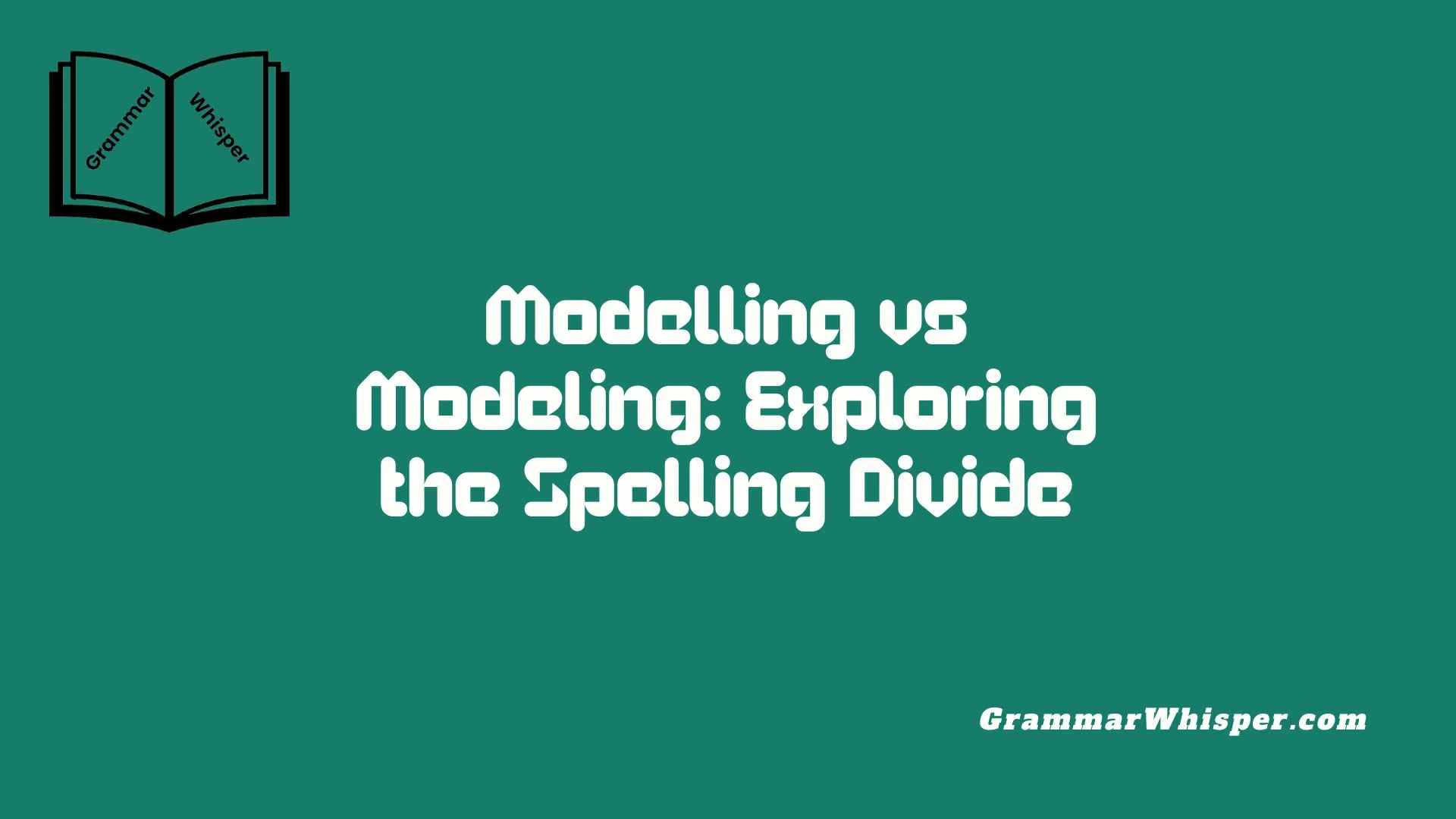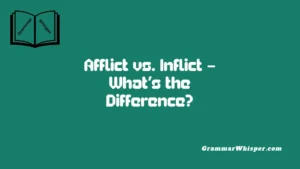As a language enthusiast and a professional editor, I’ve noticed how the variation between Modelling vs Modeling can still puzzle writers and editors. This small difference in spellings actually reflects the deeper roots of English history. In the publishing industry, regional preferences influence which version you see in books or articles. For instance, British style keeps modelling, while American professionals favour modeling. Knowing these rules helps maintain credibility and makes sure your work matches your audience.
When I craft a guide or give practical guidance, I remind my team that even a simple decision affects the clarity of our message. Choosing the right spellings builds trust and shows respect for local norms, keeping your tone consistent for a global readership. My personal experience shows that aligning your style with your readers’ preferences truly strengthens your voice and sets you apart as a careful communicator.
Understanding ‘Modeling’ vs ‘Modelling’: The Fundamentals
The words modeling (American English) and modelling (British English) share the same core meaning:
- A verb meaning to create, shape, or represent something, whether it’s a 3D sculpture, a data simulation, or a fashion lineup.
- A gerund or present-participle form of the verb model.
But the double “l” in modelling can trip up writers who aren’t aware of British spelling rules. Why does this happen? The clue lies in a fundamental spelling principle – more on that in a bit.
Definition & Domains of Use
Modeling/modelling shows up across a spectrum of fields:
| Field | Examples of Use |
| Fashion | Modeling a garment, runway shows,and agency representation |
| Architecture/Design | Scale models, CAD modeling |
| Science & Tech | Climate modeling, machine learning, 3D rendering |
| Statistics & Economics | Data modeling, predictive modeling |
| Entertainment | 3D character modeling in games and movies |
Although spelling varies, the word’s essence stays the same: shaping reality – whether literal or abstract – for understanding, representation, or presentation.
Tracing the Roots of ‘Model’
This spelling tale began with Latin modulus, which means “measure” or “standard.” Through Old French (modelle), Middle English adopted model, which carried that sense of form and measure.
In earlier English, writers sometimes used modelize. By the 17th century, model as the verb took hold, and so did both gerund forms – modeling and modelling. These early variations set the stage for the split we use today.
A Brief Timeline of Spelling
- 14th century: Model enters Middle English via Old French.
- 17th century: Modelize appears in some texts.
- 18th–19th century: Both modeling and modelling emerge in literature, poetry, and technical writing.
- 20th century: The conventions diverge – American publications drop the double “l,” while British standards hang on to it.
- Today, both spellings coexist, and knowing which one to use depends on your audience and style guide.
British vs American English: What’s the Difference?
American English tends to simplify. When a one-syllable verb ends in a consonant + vowel + consonant (CVC), American rules don’t double the final consonant when adding -ing. Hence:
- Model → Modeling (U.S.)
- Cancel → Canceling (U.S.)
British English plays it safe:
- Model → Modelling (UK)
- Cancel → Cancelling (UK)
More examples include:
| Verb | US Spelling | UK Spelling |
| Travel | Traveling | Travelling |
| Fuel | Fueling | Fuelling |
| Label | Labeling | Labelling |
Bottom line: Modelling fits British English, modeling suits American style.
Why This Double “L” Rule Exists
That extra “l” helps British English preserve the original vowel’s short sound in words like travel, model, and cancel. Without doubling, vowels could be flattened or mispronounced.
In America’s simplified system, the dropped letter doesn’t confuse pronunciation, but American editors and readers accept that aesthetic shift.
Industry-Specific Spelling
Fashion & Media
Agencies like IMG and Elite favor modeling across all their U.S. and international platforms. But magazines like Vogue UK and Elle UK stick with modelling.
Science & Tech
- Modeling dominates in U.S. industry terms: machine learning modeling, data modeling.
- In British-authored papers, you might see modeling, especially in British journals or global projects led from the U.K.
Academy & Publishing
Style guides like the APA (American Psychological Association) prefer modeling. The Oxford English Dictionary, by contrast, favors modelling. Journal guidelines usually align with the editor’s primary audience.
Modelling vs Modeling in American Education
In the United States, the preferred spelling is “modeling” (with one “L”), in line with standard American English conventions. This spelling is widely used across educational materials, academic journals, curriculum documents, and standardized tests.
By contrast, “modelling” (with two “L”s) is considered a British English variant and is rarely seen in U.S.-based educational content unless the material originates from or references the UK, Canada, Australia, or other Commonwealth nations.
✅ Common Use Cases in U.S. Education
| Field | Typical U.S. Spelling | Example Sentence |
|---|---|---|
| Science curriculum | Modeling | “Students will create a model demonstrating the water cycle through modeling.” |
| Educational standards | Modeling | “NGSS emphasizes systems thinking and the importance of modeling in science.” |
| Instructional strategies | Modeling | “Teachers use explicit modeling to demonstrate how to solve equations.” |
| Math education | Modeling | “Modeling real-world problems helps students grasp complex algebraic concepts.” |
| Academic publications | Modeling | “The study focuses on modeling classroom engagement using behavior prediction.” |
📘 Note: You may still encounter “modelling” in imported textbooks or online resources authored outside the U.S., but it’s important to adjust the spelling to match your audience’s expectations for consistency and clarity.
Authority Style Guidelines
| Style Guide | Preferred Spelling |
| APA | Modeling (US) |
| MLA | Modeling (US) implicitly |
| Chicago | Modeling (US) |
| Oxford (British) | Modelling |
| Fowler’s (UK) | Modelling |
Spellcheck tools follow these conventions too. Microsoft Word (U.S. English) flags modelling as incorrect, while modeling is fine. Switch your proofing language if writing for a British readership to avoid these red underlines.
Choosing the Right Spelling: Your Practical Guide
- Audience first
- U.S.-centric readers → Modeling
- U.K./Commonwealth → Modelling
- Pick a style guide
- APA/Chicago → Modeling
- Oxford/Fowler’s → Modelling
- Stay consistent
- Never mix within the same document or project.
- Check your first instance and pattern spellings across headings, body text, and captions.
- Consider SEO
- Match search terms if you need traffic from the U.S. vs international markets.
- Use tools
- Set proofing language in Word or Google Docs.
- Train Grammarly on your regional preference.
Case Studies & Real-World Impact
Case Study 1: Academic Journal Rejection
A British PhD student submitted to a U.S. journal. The editor requested a resubmit solely to correct modelling to modeling. Deadline stress aside, the author missed a publication window, and that cost both time and momentum.
Case Study 2: Global Marketing Pitch
An agency pitched a campaign in Canada using modeling. The client preferred modelling. The resulting email exchange showcased a need to tailor cop – and adapt visuals to match spelling preferences. Minor change, big impression.
Case Study 3: Data Platform SEO
An e-learning startup saw a 25% drop in U.K. engagement when their blog used machine modeling tutorials instead of machine modelling tutorials. Adjusting the spelling boosted regional traffic significantly over three months.
Summary Table: Quick Reference
| Audience / Region | Recommended Spelling | Recommendation Rationale |
| U.S. or U.S.-centric | Modeling | Aligns with American spelling conventions |
| U.K., Australia, Canada | Modelling | Matches British/Commonwealth spelling patterns |
| Academic publishing | Match journal guide | Eg. APA → Modeling, Oxford → Modelling |
| SEO-driven projects | Check regional SEO | Use country-based tool data for keyword guidance |
Final Thoughts
Spelling isn’t just letters; it’s a strategy. Choosing modeling or modelling reflects where your readers live, what style you follow, and the professionalism you show. With a clear decision and consistent application, you’ll communicate confidently, no matter where your words travel.
FAQS:
Is “modelling” wrong in American English?
No, it’s not wrong, but it’s considered nonstandard in the U.S. Most American style guides – including APA and Chicago – use modeling with a single “l.” Using modelling in American publications may be seen as inconsistent or incorrect by U.S. editors or readers.
Why does British English use “modelling” with two Ls?
British English follows a spelling rule where words ending in a consonant-vowel-consonant (CVC) pattern double the final consonant before adding suffixes like -ing or -ed. That’s why words like modelling, travelling, and cancelled get an extra “l” in British style.
How should I choose which spelling to use in my writing?
Consider these three key factors:
- Audience region (U.S. = modeling, U.K./Commonwealth = modelling)
- Style guide (APA = modeling, Oxford = modelling)
- Consistency – pick one and stick with it throughout the document.
Is it modeling or modelling in the USA?
In the USA, the correct spelling is modeling — with one “L”.
Example: ✅ She is starting a career in modeling.
What is the difference between modeling and modelling?
The only difference is how the word is spelled, not what it means.
- Modeling is the spelling used in American English.
- Modelling is the spelling used in British English, like in the UK, Australia, or Canada.











